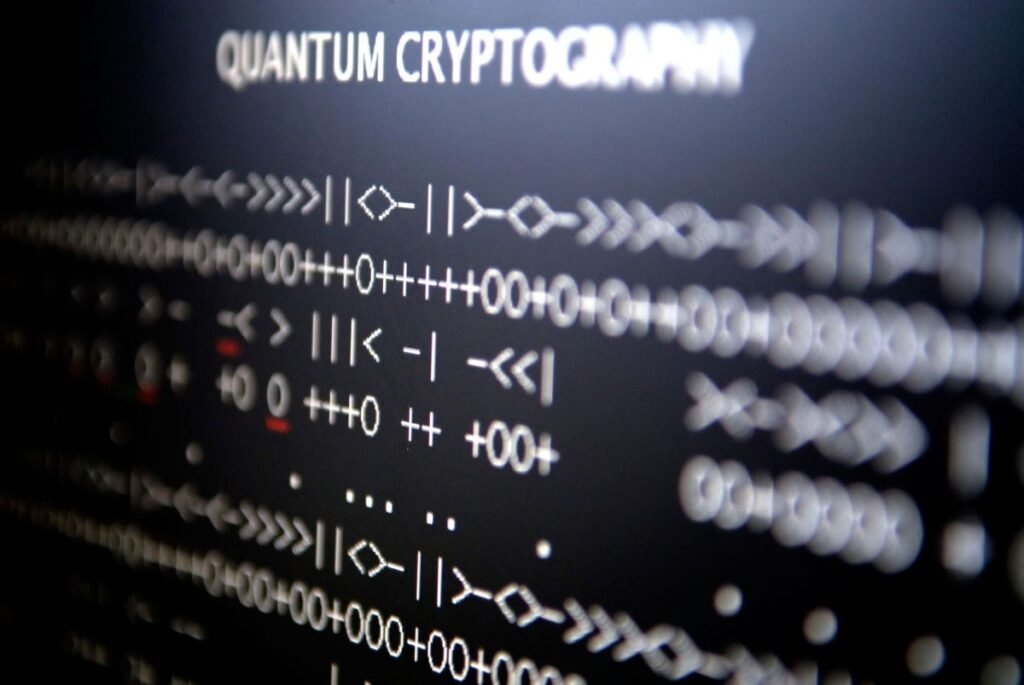In the fast-paced world of technology, data security is a growing concern as traditional encryption methods struggle to keep up with the rise in cyber threats. Enter Quantum Cryptography—an innovative field at the intersection of quantum physics and cryptography, offering unprecedented security possibilities. At VisionTact, we’re excited about the promise of quantum cryptography to reshape digital security, enhancing trust in communications for businesses, governments, and individuals alike.
In this blog, we’ll unpack what quantum cryptography is, how it differs from classical encryption, and why it represents a revolutionary approach to safeguarding information.
What is Quantum Cryptography?
Quantum cryptography uses principles of quantum mechanics to develop secure communication channels that, theoretically, cannot be intercepted or compromised. Traditional cryptographic methods rely on complex mathematical algorithms that are difficult to break, but quantum cryptography goes a step further by exploiting the unique properties of quantum particles. The most widely known application of quantum cryptography is Quantum Key Distribution (QKD), which allows two parties to share a secret encryption key in a way that is immune to eavesdropping.
How Does QKD Work? In Quantum Key Distribution, quantum particles (usually photons) are sent from one point to another using special encoding methods. Since observing a quantum particle alters its state—a principle known as the Heisenberg Uncertainty Principle—any attempt to intercept or measure the particles would immediately disrupt the transmission and reveal the eavesdropper’s presence. This is a game-changer because it prevents the fundamental weakness of traditional cryptography: undetected interception.
Quantum Cryptography vs. Classical Cryptography
Traditional cryptographic methods, such as RSA or AES, rely on mathematical functions that require significant computational power to decode without the key. However, these methods are vulnerable to future advancements in quantum computing, as quantum computers are predicted to crack these encryptions much faster than classical computers. This is known as “Quantum Supremacy” over traditional cryptographic protocols, potentially rendering them obsolete.
Here’s a breakdown of how quantum cryptography overcomes classical cryptography’s limitations:
- Mathematical Complexity vs. Quantum Security: Classical cryptography relies on complex algorithms, while quantum cryptography leverages the laws of physics. Breaking classical encryption is a matter of computational power, but breaking quantum encryption would require violating physical principles.
- Eavesdropping Detection: Quantum cryptography enables immediate detection of any interception attempts, unlike classical cryptography where eavesdropping can often go undetected.
- Future-Proofing: As quantum computers advance, traditional cryptographic methods could become vulnerable, while quantum cryptography remains secure due to its foundation in quantum mechanics.
Applications of Quantum Cryptography
Quantum cryptography’s promise of unbreakable security makes it ideal for sectors where data integrity is paramount. Some key industries actively exploring quantum cryptography include:
- Finance: Quantum cryptography can secure financial transactions and protect sensitive information against future hacking threats. Banks and financial institutions are increasingly investing in quantum technology to ensure data remains secure, even in the quantum age.
- Government and Defense: Governments worldwide are exploring quantum cryptography to secure classified communications and protect national infrastructure. In a world where cyber warfare is a reality, unbreakable encryption is a priority for defense.
- Healthcare: Patient data privacy is crucial, and quantum cryptography can secure health records and communication between healthcare providers and insurers, ensuring compliance with privacy regulations.
- Telecommunications: As global internet usage increases, telecom companies are researching quantum cryptography to enhance security in communication networks.
Challenges and the Road Ahead
Despite its promise, quantum cryptography is still in its early stages, with some technical and logistical challenges to overcome:
- Infrastructure Requirements: Quantum cryptographic systems require specialized hardware and infrastructure, making widespread adoption costly and complex.
- Transmission Limitations: Current QKD systems are limited by distance and are best suited for short-range communication. Researchers are working to extend this range with quantum repeaters.
- Standardization and Compatibility: For quantum cryptography to become mainstream, international standards and compatible frameworks are essential. This will allow different organizations and industries to use the technology consistently and securely.
While challenges exist, advancements in quantum technology continue at a rapid pace. Companies, universities, and governments are investing billions into quantum research, pushing the boundaries of what’s possible. For example, China recently launched the world’s first quantum communication satellite, highlighting how close we may be to global quantum-secure communication networks.
The Future of Quantum Cryptography
As cyber threats grow and technology advances, quantum cryptography is moving from theory to reality. Quantum-safe cryptographic solutions could provide the bedrock for a new era of data security. At VisionTact, we recognize the importance of staying ahead in secure technology, exploring ways quantum cryptography can bolster our clients’ data privacy and safeguard critical assets.
While full-scale implementation might still be a few years away, the steps we take now to understand and invest in quantum technology will pay off in the long term. By preparing for a quantum-secure future, we can create a foundation for safer communication and resilient systems across industries.
Conclusion
Quantum cryptography stands as a frontier in cybersecurity, promising a future where data breaches and cyberattacks are drastically reduced. Its basis in the laws of physics, not mathematical complexity, makes it an unparalleled tool in the fight against cyber threats. As the technology matures, VisionTact aims to help businesses understand and implement quantum-safe security practices, ensuring a robust defense against tomorrow’s cyber risks.
Quantum cryptography is not just a technological advancement; it’s a paradigm shift in how we approach data security. Embracing this shift today positions organizations to thrive in a digitally secure future.

